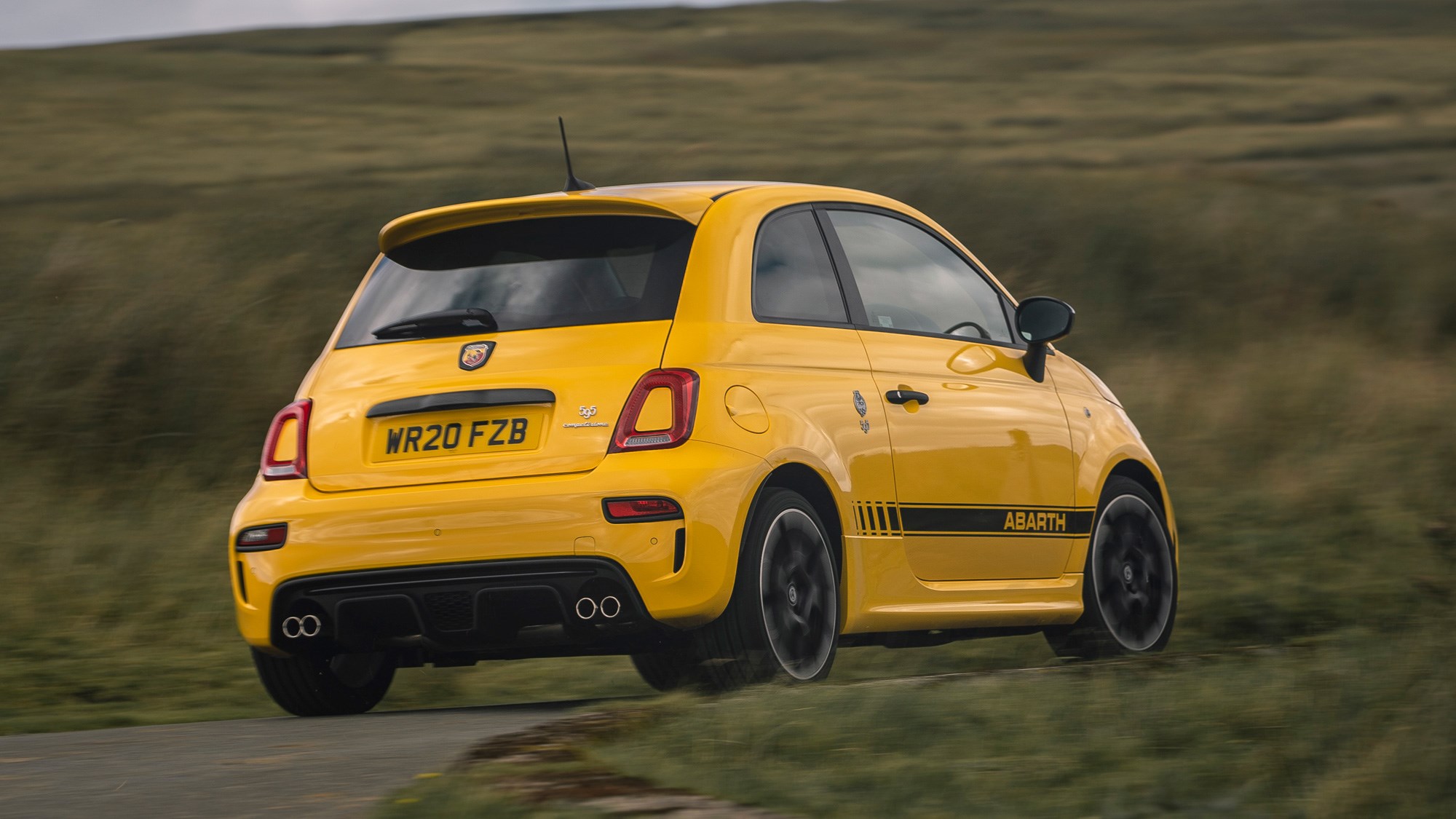► Abarth’s long-lived hot hatch tested
► Intoxicating exhaust note, brutish handling
► 178bhp model is hilariously quick
I love the Abarth 595, but its age is making it more difficult to recommend. It’s been on sale in various guises since 2008, meaning its production run has spanned roughly double that of its rivals.
I’ll put the 595’s age into perspective. Over the past 14 years, Ford has launched two generations of the Fiesta ST, while Suzuki’s showrooms have waved through three generations of the Swift Sport. With each new model, those cars made significant leaps forward in terms of efficiency, driver assistance technology and infotainment. The Suzuki even adopted hybrid tech.
But the Abarth 595 hasn’t changed much. Updates have mainly been limited to cosmetic parts and infotainment technology, such as in 2018 when the car received a racier front bumper, some fresh paint finishes, a digital gauge cluster and a shiny new touchscreen.
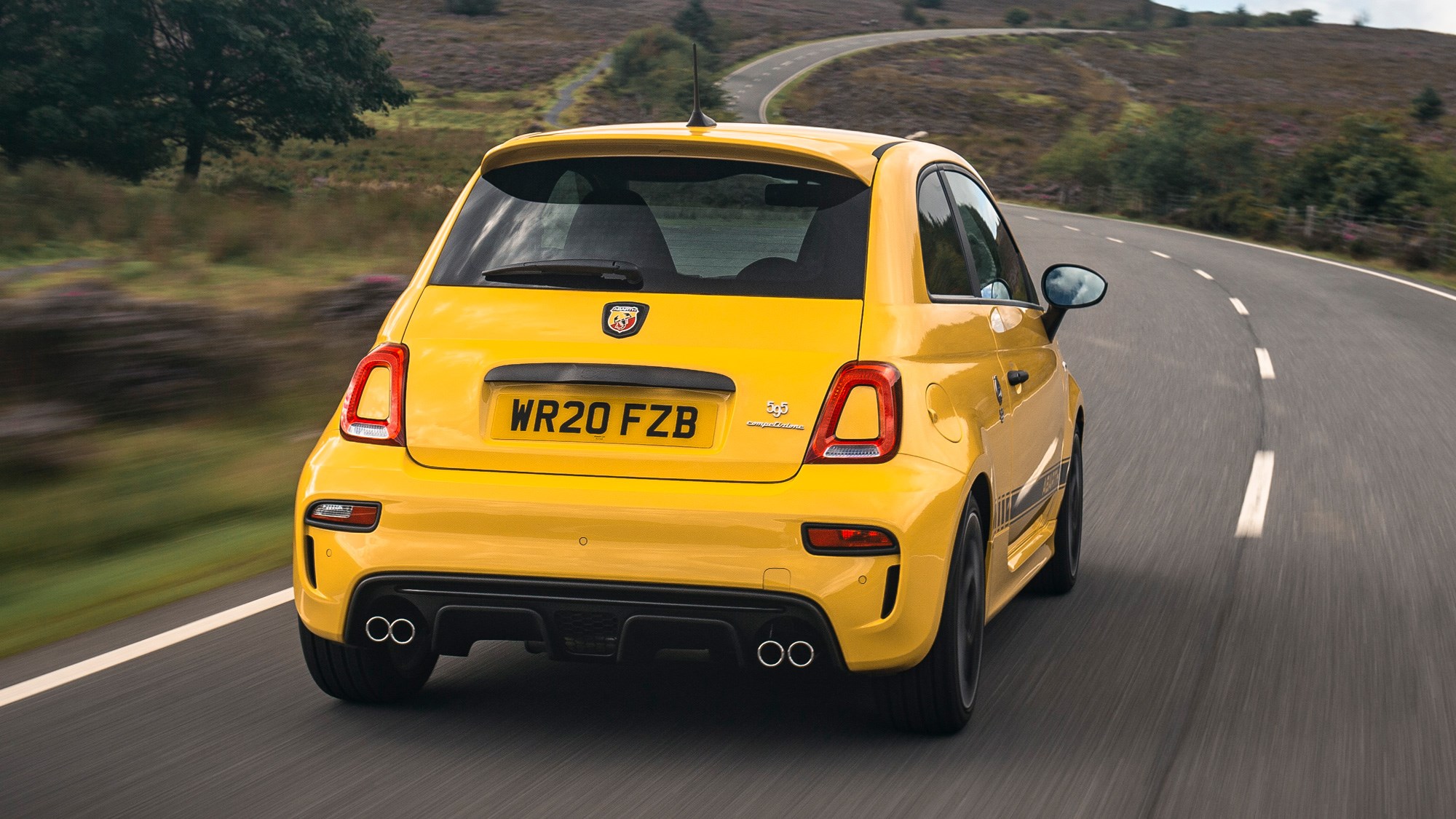
Abarth’s dedication to evolve the 595 is admirable, but these minor revisions are starting to look a little half-baked when compared to the big-budget redevelopments of its competitors. Remember, the Abarth’s engine, chassis and gearbox are basically as they were when the car was first left the factory in 2008 – and that means it feels quite old school.
If you want your hot hatchback to bristle with the latest and greatest technology, this could be enough to write the little Abarth off your shortlist. But, if you have even a faint concentration of petrol running through your veins, I urge you to drive one before issuing your dismissal. The 595 offers one of the most analogue, visceral driving experiences of any new car on sale today – and that makes it the perfect choice for keen drivers.
I don’t believe you. What makes the Abarth 595 so good?
Well, there aren’t any electronic nannies for a start. Lane-keeping assist? Nope. Cruise control? Nah. Autonomous emergency braking? Forget it. Brake yourself, you lazy sod. You’re completely on your own in the Abarth. If you get it wrong, it’s your fault – and that makes it exciting.
This resistance to technological innovation extends to more than just driver assistance equipment, too. For example, the Abarth’s brake pedal is connected to the calipers by hydraulic lines rather than servos and the engine does without hybrid assistance. The only fuel-saving device on the car is the turbo – and that’s mainly there for the extra power.
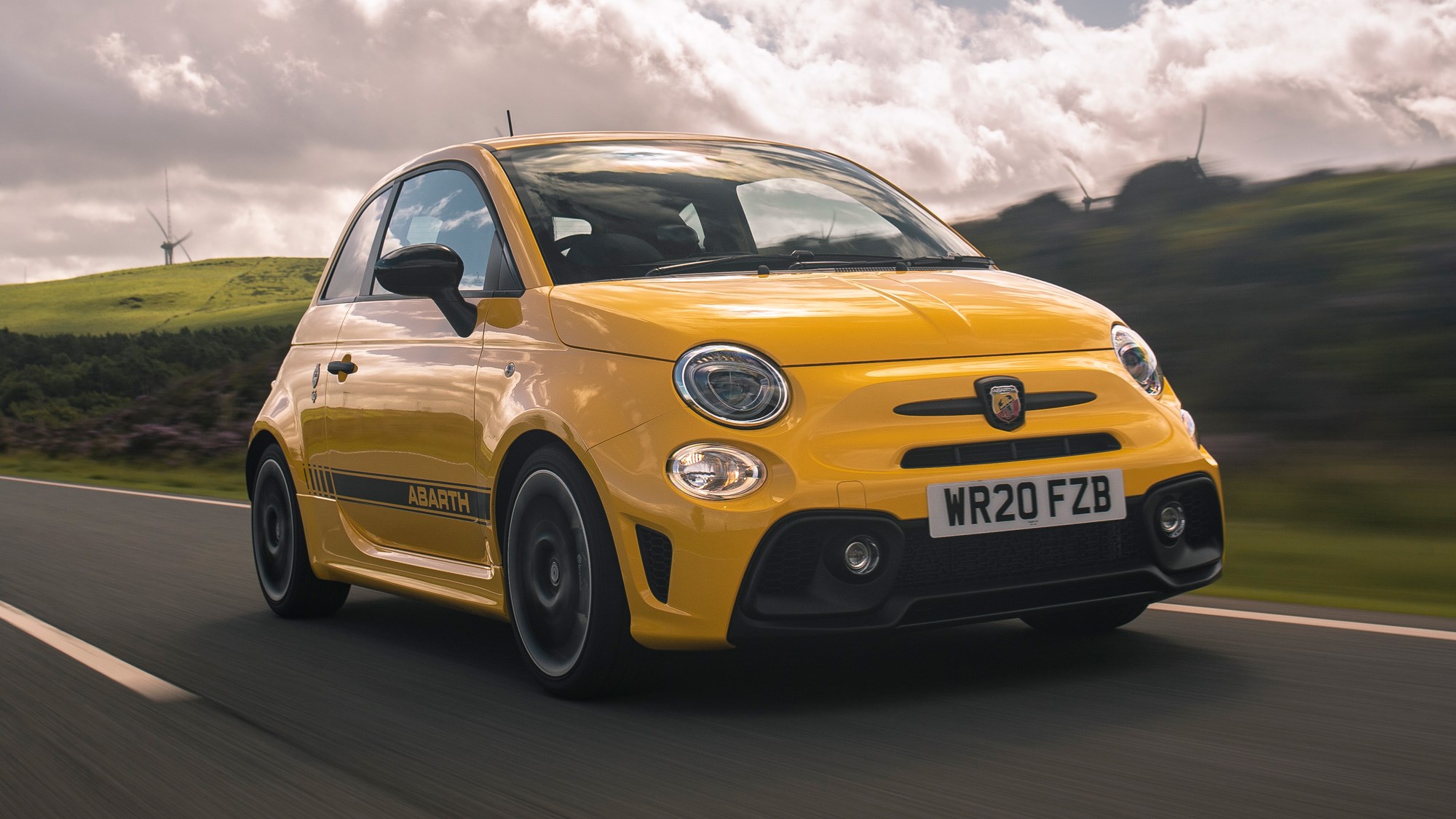
And what a turbo. It feels like it fell straight out of the 1980s. There’s an enormous flat spot in the power band until 3,000rpm, at which point the turbo finally wakes up and forces a solid bar of boost down the engine’s throat until you hit the redline. It’s hilarious. And, to keep your inner 10-year-old giggling, there’s a very loud accompanying parp from the exhaust when the boost arrives.
The Abarth’s 1.4-litre four-cylinder petrol engine comes in two states of tune. The cheaper 595 models produce 163bhp, while the range-topping 695 variants have 178bhp. Abarth claims a 0–62mph time of 7.3 seconds for the 595 and 6.7 seconds for the 695, but we reckon both are quicker than that. In short, the 595 is entertaining in a straight line, while the 695 is thrilling.
Straight line speed is all well and good, but can the 595 corner?
Oh yes. It just doesn’t do it with the same delicacy as the Ford Fiesta ST or Hyundai i20 N. Every 595 comes with an innocuous-looking button on the dashboard marked ‘TTC.’ That acronym stands for Torque Transfer Control. It’s a rudimentary torque vectoring system which brakes the inside wheel to drag the car towards the apex, helping the driver to carry more speed through corners.
It works impressively well but, like everything about the Abarth’s driving experience, it’s rather brutal. For example, if you hammer the throttle a little too hard on your way out of the corner, you’ll spin both front wheels if the engine is on boost. The traction control isn’t particularly sophisticated either so, when the brakes release, all the torque is given free rein to run rampant in the wheel arches. That’s great for smoke shows, but bad for remaining friendly with the local constabulary.
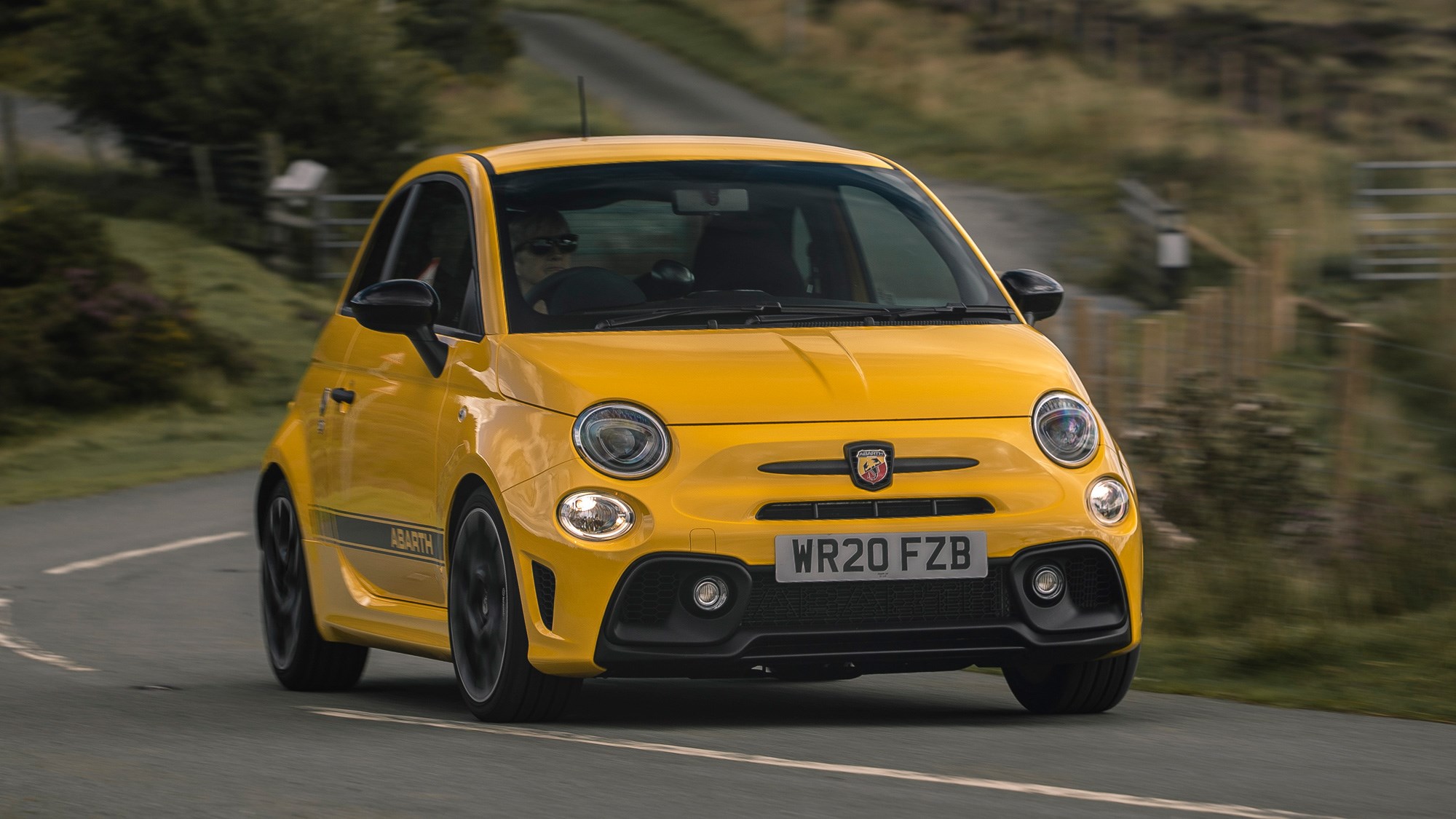
You can mitigate at least some of this hooliganism by opting for the 695 Competizione. That car comes with a mechanical limited-slip differential which does a better job of managing the engine’s power when you mat the throttle out of bends. However, it throws up a different problem.
The diff sends the power to whichever wheel has the most grip. That works great when you’re halfway around a corner, but not so much when you’re just trying to make the car go in a straight line. You’ll find yourself constantly sawing at the steering to keep the car centred, especially in the wet.
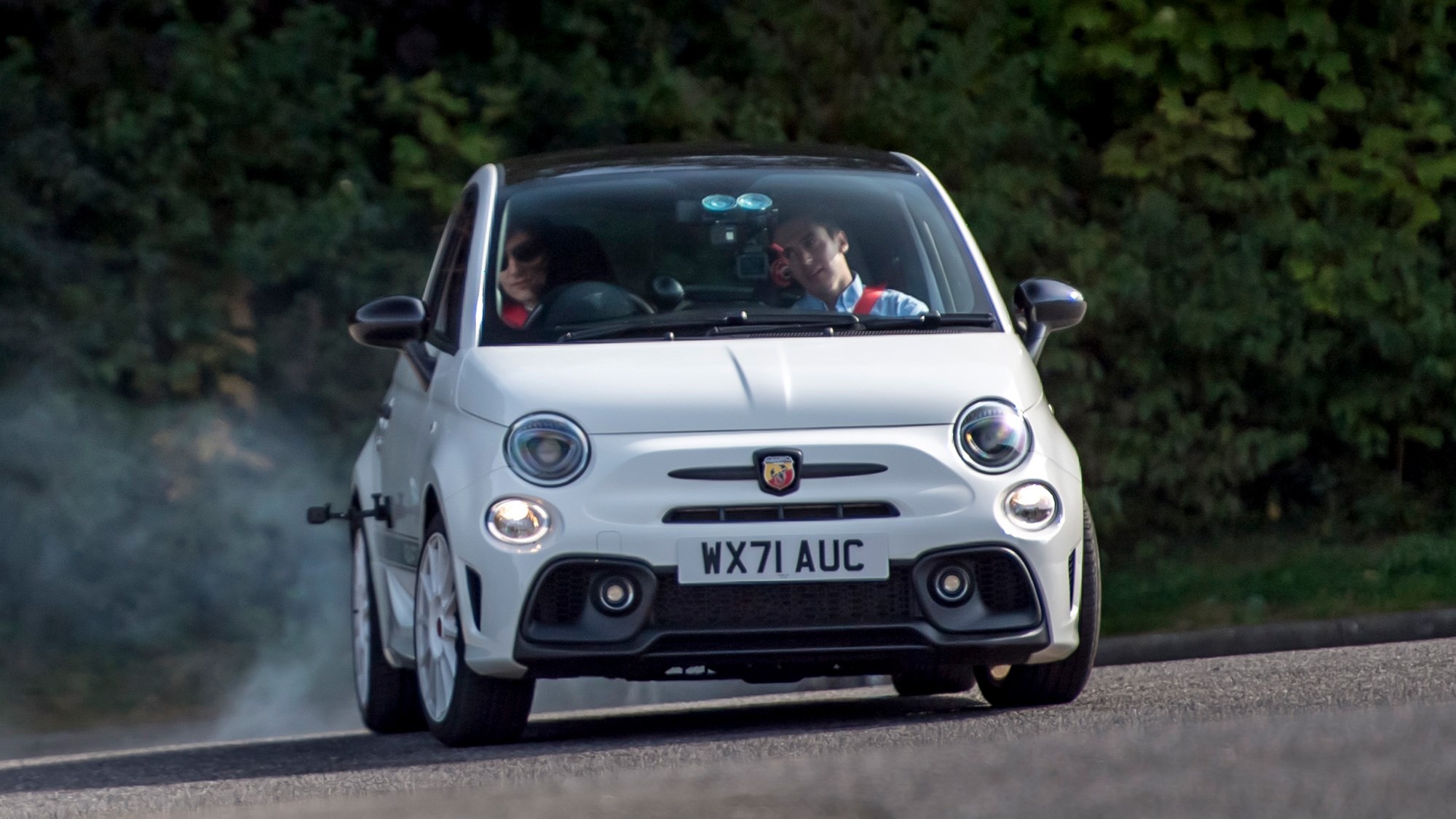
The suspension setup is rather well-judged, though. It’s a bit firmer than a Ford Fiesta ST, but it isn’t harsh enough to bruise your kidneys. And you can forgive the extra stiffness for the cornering ability it provides. You can throw the Abarth at bends with reckless abandon and it’ll stay flat, as the image above of me handbrake turning one around the car park at Brand’s Hatch will hopefully testify.
However, there’s less front-end grip in the Abarth than you’ll find in a Hyundai i20 N, so it takes a little longer to get comfortable with the car before you start pushing its limits. But you can get around that by hammering onto the brakes before the turn to get the weight over the nose. This approach is more effective in the 695 Competizione, which gets a set of meaty four-pot Brembo calipers up front.
Sounds like a riot to drive. But what about the rest of the car?
Erm. Well, it’s not bad I suppose. Just pack lightly. Oh, and don’t offer a lift to any more than one of your mates at a time. I’ll start with the biggest complaint in the CAR Magazine office – the driving position. I’m used to razzing around in an old Mini, so I found the Abarth’s sit-up-and-beg seating quite familiar. However, other members of the CAR team have complained that it’s too cramped.
If I’m honest, the seats are mounted too high and there’s no reach adjustment in the steering column, which means you need to sit quite close to pedals to get your arms a comfortable distance from the wheel. If you’re tall, that can be a bit uncomfortable on your legs.
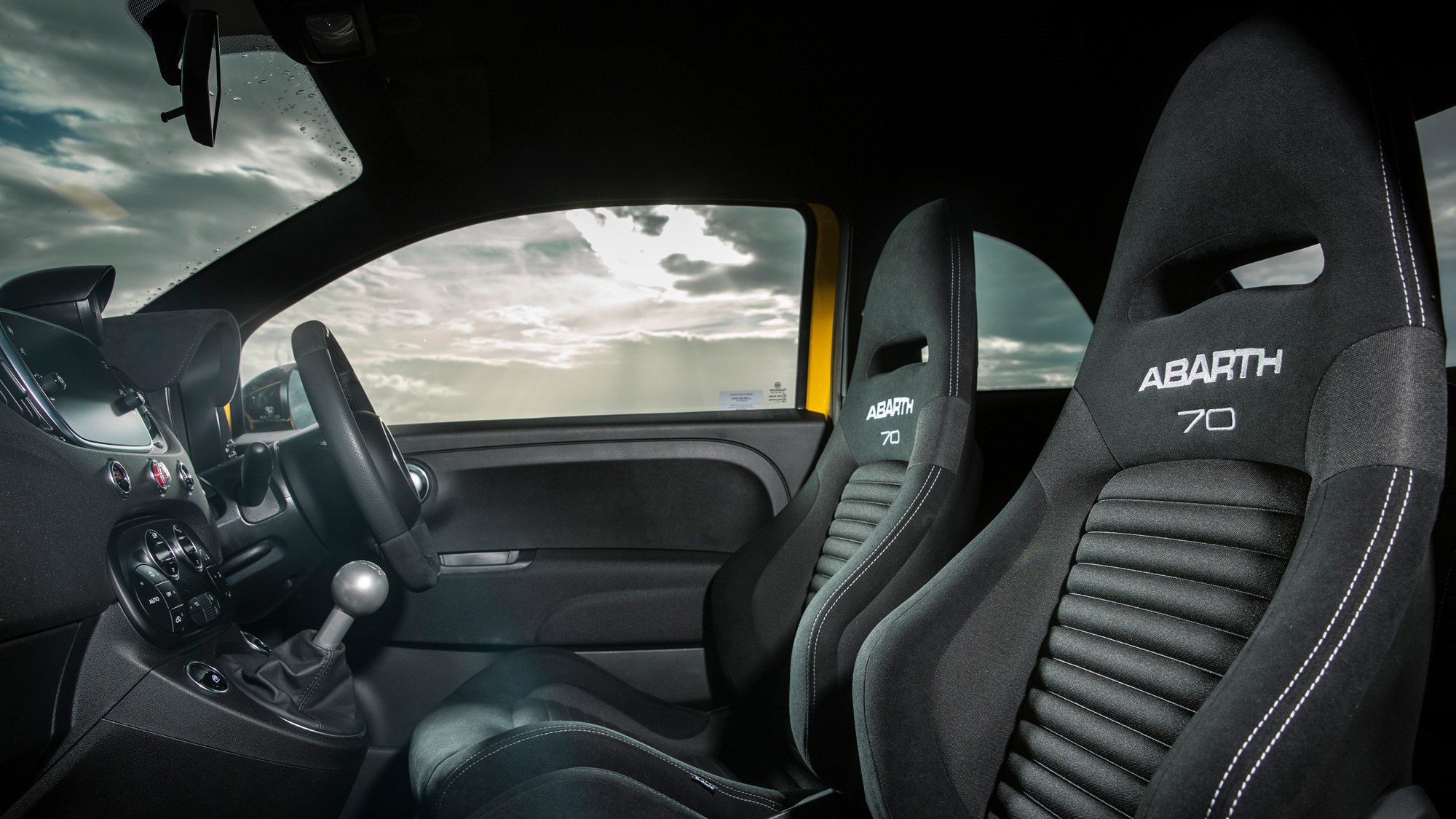
Because the seats are mounted so high up, it also feels like you’re sitting on the Abarth rather than in it. Your torso is a long way from the car’s centre of mass, so you get thrown around like a pendulum if you’re giving it the full tin of Branston beans on a back road. The driver can brace themselves against the wheel, but passengers simply get flung around like ragdolls.
The cabin hasn’t been thought out particularly well, either. The infotainment system comes with Apple CarPlay and Android Auto, which is great. But, once you’ve wired your phone into the screen, there isn’t a storage tray large enough to hold it. You either leave it unsecured on the passenger seat or rattling around in the passenger footwell. Not ideal if you’ve got a posh £1,500 iPhone.
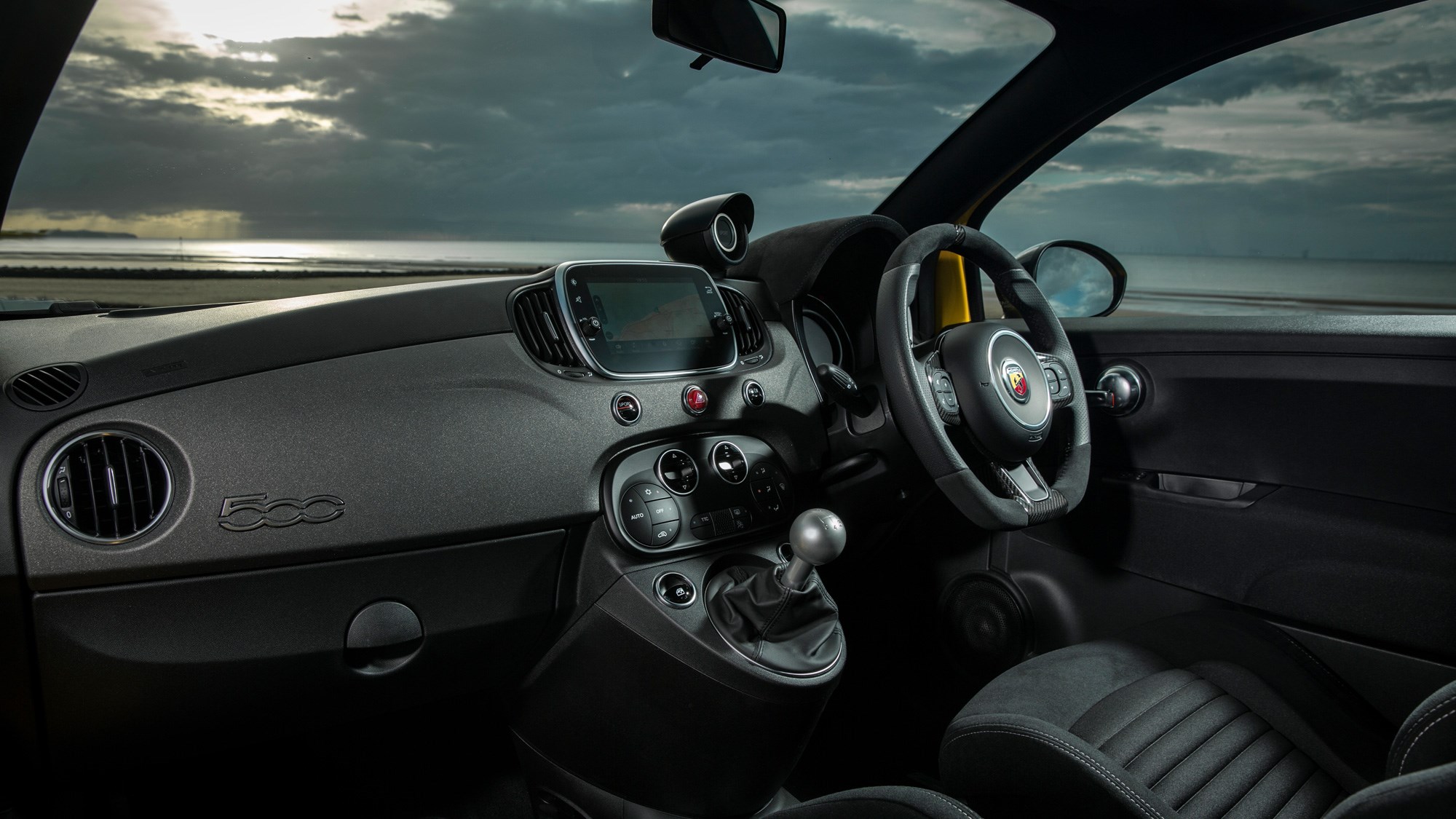
The boot isn’t exactly huge, either. You get 185 litres with the rear seats in place, which is a whopping 126 litres less than the Fiesta ST and 80 litres less than the Suzuki Swift Sport. I know, this seems like somewhat of a moot point in a performance car – but the Abarth 595 is a hot hatch. It should be a Swiss Army Knife, not a machete.
Verdict
Whether or not you should buy an Abarth 595 depends an awful lot on your willingness to make sacrifices. If you can live without the latest technology and don’t regularly need to transport household appliances, I’d say it’s well worth a look. You’ll struggle to find anything else in its class that’s as entertaining to drive.
The 595 is also the last of dying breed. Abarth recently broke the seal on its electrification strategy, launching its pure-electric replacement for the 595 in November 2022. Both cars are being sold in tandem for the time being, but it won’t be long before the petrol-powered hot hatches are hacked out of the company’s brochure.
Yes, the 595 is flawed. It’s impractical and rather uncomfortable if you’re any taller than five foot eight. It’s also expensive – prices for the fastest 695 Competizione start from £28,945, which is a lot of money for a car that doesn’t even have a pocket to put your phone in. But you can’t always take a rational approach when it comes to cars like this.
The Abarth excels in its ability to make you smile. The performance is always hilarious, the exhaust note never gets boring and you’ll howl like a hyena every time you chuck it around a roundabout with the front tyres spinning like Catherine wheels. It’s fun – and, with the sheer amount of misery in the world at the minute, that’s worth its weight in gold.
